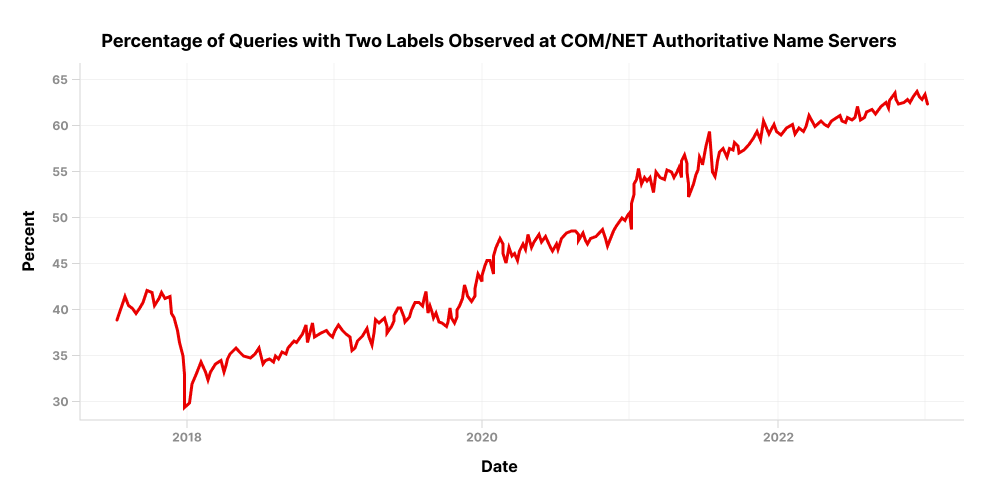Over the past several years, domain name queries – a critical element of internet communication – have quietly become more secure, thanks, in large part, to a little-known set of technologies that are having a global impact. Verisign CTO Dr. Burt Kaliski covered these in a recent Internet Protocol Journal article, and I’m excited to share more about the role Verisign has performed in advancing this work and making one particular technology freely available worldwide.
The Domain Name System (DNS) has long followed a traditional approach of answering queries, where resolvers send a query with the same fully qualified domain name to each name server in a chain of referrals. Then, they generally apply the final answer they receive only to the domain name that was queried for in the original request.
But recently, DNS operators have begun to deploy various “minimization techniques” – techniques aimed at reducing both the quantity and sensitivity of information exchanged between DNS ecosystem components as a means of improving DNS security. Why the shift? As we discussed in a previous blog, it’s all in the interest of bringing the process closer to the “need-to-know” security principle, which emphasizes the importance of sharing only the minimum amount of information required to complete a task or carry out a function. This effort is part of a general, larger movement to reduce the disclosure of sensitive information in our digital world.
As part of Verisign’s commitment to security, stability, and resiliency of the global DNS, the company has worked both to develop qname minimization techniques and to encourage the adoption of DNS minimization techniques in general. We believe strongly in this work since these techniques can reduce the sensitivity of DNS data exchanged between resolvers and both root and TLD servers without adding operational risk to authoritative name server operations.
To help advance this area of technology, in 2015, Verisign announced a royalty-free license to its qname minimization patents in connection with certain Internet Engineering Task Force (IETF) standardization efforts. There’s been a steady increase in support and deployment since that time; as of this writing, roughly 67% of probes were utilizing qname-minimizing resolvers, according to statistics hosted by NLnet Labs. That’s up from just 0.7% in May 2017 – a strong indicator of minimization techniques’ usefulness to the community. At Verisign, we are seeing similar trends with approximately 65% of probes utilizing qname-minimizing resolvers in queries with two labels at .com and .net authoritative name servers, as shown in Figure 1 below.

Kaliski’s article, titled “Minimized DNS Resolution: Into the Penumbra,” explores several specific minimization techniques documented by the IETF, reports on their implementation status, and discusses the effects of their adoption on DNS measurement research. An expanded version of the article can be found on the Verisign website.
This piece is just one of the latest to demonstrate Verisign’s continued investment in research and standards development in the DNS ecosystem. As a company, we’re committed to helping shape the DNS of today and tomorrow, and we recognize this is only possible through ongoing contributions by dedicated members of the internet infrastructure community – including the team here at Verisign.
Read more about Verisign’s contributions to this area:
Minimum Disclosure: What Information Does a Name Server Need to Do Its Job? (blog)
Maximizing Qname Minimization: A New Chapter in DNS Protocol Evolution (blog)
Information Protection for the Domain Name System: Encryption and Minimization (blog)



